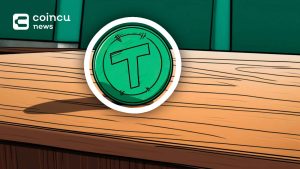Today, USDT is the third largest cryptocurrency in the world by market value. And that worries some economists, including an official from the US Federal Reserve (Fed).
Eric Rosengren – Chairman Boston Fed
Last month, Boston Fed President Eric Rosengren warned about the USDT, calling it a potential risk to financial stability. Meanwhile, some investors suggested that the loss of confidence in USDT could be the cryptocurrency’s “black swan event,” an event that is unpredictable and has a serious impact on the market.
The problems surrounding USDT have important implications for the emerging crypto world. As a result, many economists are increasingly concerned that it could also affect markets outside of cryptocurrencies.
What is USDT?
Like Bitcoin, USDT is a cryptocurrency. In fact, it is the third largest digital coin in the world by market value, but it is very different from Bitcoin and other cryptocurrencies.
USDT is a form of stablecoin. Stablecoins are digital currencies that are tied to real assets (e.g., US dollars) in order to maintain stable value, unlike most cryptocurrencies, which are known to be volatile. For example, Bitcoin rose to an all-time high of nearly $ 65,000 in April and has fallen in value by almost half since then.
USDT is designed to be pegged to the US dollar at a 1: 1 ratio. While other cryptocurrencies often fluctuate in value, 1 USDT equals 1 dollar. However, this is not always the case, and when the value of the USDT fluctuates up and down around the closing price, it scares investors.
Traders often use USDT to buy cryptocurrencies instead of greenbacks. Because, in principle, more stable assets give them security in times of volatile crypto markets.
Cryptocurrencies, on the other hand, are not regulated and many banks avoid partnering with digital currency exchanges due to the associated risk. This is where stablecoins come into play.
Why USDT controversial again?
Some investors and economists are concerned that USDT’s issuer, Tether, does not have enough reserves to justify its dollar peg.
In May, Tether announced reserves for stablecoin USDT. The company announced that only a small fraction of its shares – 2.9% to be precise – are held in cash, while the majority is held in commercial paper, a form of short-term unsecured debt.
According to JPMorgan, this would make Tether one of the top 10 largest commercial paper holders in the world. Tether has been compared to traditional money market funds, but without any regulation.
With over $ 60 billion worth of tokens in circulation, Tether has even more deposits than US banks.
There have long been concerns as to whether USDT could be used to manipulate the price of Bitcoin research claims the token was used to support Bitcoin during the main price drops of the 2017 rally.
Earlier this year, the New York Attorney General reached an agreement with Tether and Bitfinex, an affiliate digital currency exchange.
The state’s top law enforcement officer has charged companies with transferring hundreds of millions of dollars to cover losses of $ 850 million.
Tether and Bitfinex agreed to pay $ 18.5 million as part of the settlement and were banned from operating in New York, but the companies did not admit any wrongdoing.
Market crisis
JPMorgan analysts previously warned that a sudden loss of confidence in Tether could result in a “severe liquidity shock to the broader crypto market.”
However, there are also concerns that a sudden surge in USDT withdrawals could lead to a market crash affecting assets other than cryptocurrencies.
In June, Rosengren mentioned USDT and other stablecoins as one of the potential risks to financial stability.
“These stablecoins are becoming increasingly popular. A future crisis could easily be triggered as it becomes a more important area of the financial markets unless we start regulating it and making sure it is actually much more stable.
Last week, Fitch Ratings warned that a sudden bulk buyback of USDT tokens could destabilize short-term credit markets.
The U.S. credit rating agency said:
Coins fully backed by safe, highly liquid assets pose less risk, although authorities may still be concerned if used globally or systematically.
“While stablecoins that partially use partial reserves or apply a riskier asset allocation can be exposed to greater risk.”
USDT is not the only stablecoin on the market, but it is by far the largest and most popular stablecoin. There are also other stablecoins such as USDC and BUSD.
Minh Anh
According to CNBC
Follow the Youtube Channel | Subscribe to telegram channel | Follow the Facebook page




















